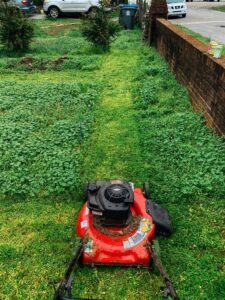When it comes to gardening, there are three chief methods – organic, chemicalpest and insect management. The only real difference between these three gardening styles lies chiefly in the way of fertilizing, pest control, and mulching is put on the garden. Besides that, they all seem to pretty much be the same. Fertilizer, pest control, and mulching – these are the three chief components of an effective garden.
Fertilizer, more commonly called “potash,” is any substance added to a soil or liquid medium that offers plant nutrients which are not required by the plant for growth and growth. Potash is generally mixed into the soil and left for several months to a year before being completely removed from the plants’ root systems, or”soil.” After fertilization, it’s typically removed from the plant root zone via mechanical methods such as”tilling” or”seeding.”
Chemical fertilizing, sometimes called”potash,” is the practice of applying fertilizer by applying it to the ground, or”potash.” It’s most often blended into the soil in the planting period, either before the plant’s seed or promptly after seeding. This practice is quite powerful in supplying healthy soils and healthful plants. However, it may also be hazardous to both the environment and human health. Because chemical fertilizing releases nitrates into the atmosphere, many plants are sensitive to this kind of fertilizing. Nitrates are connected to harmful insects such as the lawn tick.
Pest management is the practice of removing potentially harmful insects
Pest management is the practice of removing potentially harmful insects that infest gardens and plants. Tending to an infestation with the usage of chemicals can be as simple as using a bug spray to repel insects and their larvae, or as complex as using systemic pesticides which kill not just insects, but their eggs, in addition to other pests. These pesticides have proven especially effective against the harmful West Nile Virus. In case you have questions regarding how to best control your backyard’s pest issues, contact your neighborhood nursery or garden store.
Beneficial insects such as ladybirds and lacewings are another way to keep insects like aphids, red spider, plant lice, and lacebugs from the plants and your backyard. Ladybirds feed on aphids and lower the plant’s demand for food. They also help control other pests which infest gardens, including ground beetles, lacebugs, snails, and rodents. Other beneficial insects include: ground beetles, white-flies, praying mantis, carpenter ants, bumble bees, and windroses.
Enlisting the help of beneficial predators can prove highly beneficial to a healthy backyard. When predators are found, the plants are not eaten off by disease-causing creatures. A fantastic example of a predator is ladybird beetles. Ladybirds will eat anything, such as other ladybird species, so it is important that you provide them with lots of food and nesting sites.
The soil where plants grow is just another habitat that insects and other organisms favor. Many anglers wrongly feel the only way to deal with plant diseases is to destroy them. This is untrue. The soil is one of the most crucial habitats which plants will need to survive. Plants in poor soil may die due to disease, pest stress, and plant drought, however, the dirt will not wither away and will help plants recover.

Enlisting the help of beneficial predators can prove highly beneficial to a healthy backyard
Gardening is a lot of fun, but it takes hard work and time to achieve the results you desire. Fertilizing your plants is one of the most essential things you can do in order to improve the grade of the life in your yard. There are various options for fertilizers on the market today, but they all have some type of side effect, such as stripping the soil of valuable nutrients. To be able to prevent this undesirable side effect, purchase something that has been specifically designed for use in growing plants, such as Garden Organic. They are especially good at providing the proper amount of nutrition without stripping the dirt.

